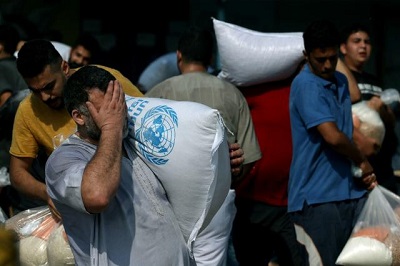United Nations, (Samajweekly) The largest aid convoy since October 7 arrived in Gaza on Friday with 137 truckloads of aid and 129,000 litres of fuel, UN humanitarians said.
The UN Office for the Coordination of Humanitarian Affairs (OCHA) said that on the first day of the humanitarian pause in hostilities, the world body was able to scale up the delivery of humanitarian assistance into and across Gaza, Xinhua news agency reported.
It said 200 trucks were dispatched to the Rafah crossing and 137 reached the UN Agency for Palestine Refugees (UNRWA), where they were offloaded, making it the biggest humanitarian convoy received since the outbreak of the Hamas-Israel war on October 7.
Some 129,000 litres of fuel and four trucks of gas also crossed into Gaza. Twenty-one critical patients were evacuated in a large-scale medical operation from the north of Gaza, it said.
Hundreds of thousands of people were assisted with food, water, medical supplies and other essential humanitarian items. Humanitarian teams from the United Nations and partners will continue to ramp up humanitarian operations to meet the needs of people throughout Gaza in the coming days, said the office, referring to the negotiated four-day humanitarian pause.
Over 1.7 million people in Gaza are estimated to be internally displaced, with about 1 million staying in at least 156 UNRWA shelters across the Gaza Strip, OCHA said. The shelters are accommodating far more people than their intended capacity, and despite being unable to accommodate new arrivals, people continue to arrive.
As of Thursday, about 200 patients and medical staff at the Indonesian hospital in Beit Lahiya in northern Gaza awaited evacuation, the humanitarians said.
Philippe Lazzarini, the UNRWA commissioner-general, said after his most recent visit to Gaza that the streets in Rafah and Khan Younis were almost empty, with solid waste piled up everywhere, and that most shops and pharmacies were closed under a constant bombardment.
He said one of the UNRWA shelters “looks like an overcrowded prison with substandard living conditions with few toilets and sewage flooding.”
Skin diseases and diarrhoea increased due to unsanitary conditions that became worse by rain. In some places, the rates of diseases were 45 times higher than in previous years, he said.










